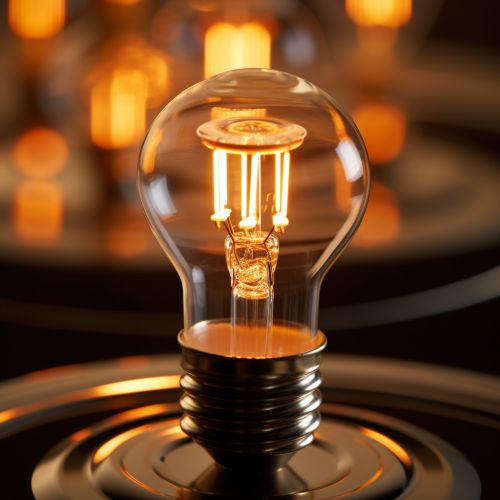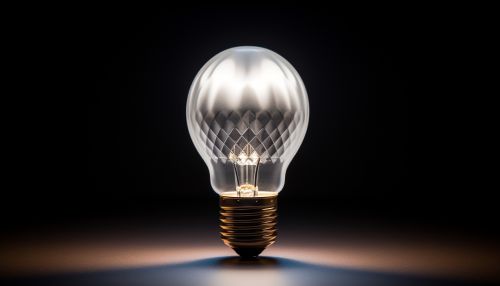Light Emitting Diode
Introduction
A Light Emitting Diode (LED) is a type of semiconductor device that emits light when an electric current passes through it. This process is known as electroluminescence. LEDs are used in a wide range of applications, from indicator lights and display panels to large-scale outdoor lighting and digital billboards.


History
The principle of electroluminescence was discovered in 1907 by British scientist H.J. Round, but the first practical LED was not developed until 1962 by Nick Holonyak Jr., an engineer at General Electric (GE). Early LEDs emitted low-intensity red light, but modern LEDs can produce light of varying colors across the visible, ultraviolet, and infrared spectrum.
Principle of Operation
The operation of an LED involves the principles of quantum mechanics. When a suitable voltage is applied to the leads of an LED, electrons are able to recombine with electron holes within the device, releasing energy in the form of photons. This effect is called electroluminescence, and the color of the light is determined by the energy band gap of the semiconductor material used in the LED.
Structure and Materials
An LED is made up of a chip of semiconducting material doped with impurities to create a p-n junction. The choice of material determines the color of the emitted light, the intensity of the light, and the efficiency of the LED. Common materials used in LED production include gallium arsenide, gallium phosphide, silicon carbide, and indium gallium nitride.
Applications
LEDs have a wide range of applications due to their efficiency, longevity, and versatility. They are used in residential and commercial lighting, automotive lighting, traffic signals, and electronic devices such as televisions, computers, and mobile phones. LEDs are also used in medical devices, industrial automation, and even in space exploration.
Advantages and Disadvantages
LEDs offer several advantages over traditional light sources such as incandescent and fluorescent lamps. They are more energy-efficient, have a longer lifespan, and are more durable. However, they also have some disadvantages, such as higher initial cost and sensitivity to temperature.
Future Developments
The future of LED technology looks promising, with ongoing research into new materials and designs that could further improve the efficiency and performance of LEDs. Potential areas of development include organic LEDs (OLEDs), quantum dot LEDs (QLEDs), and perovskite LEDs.
